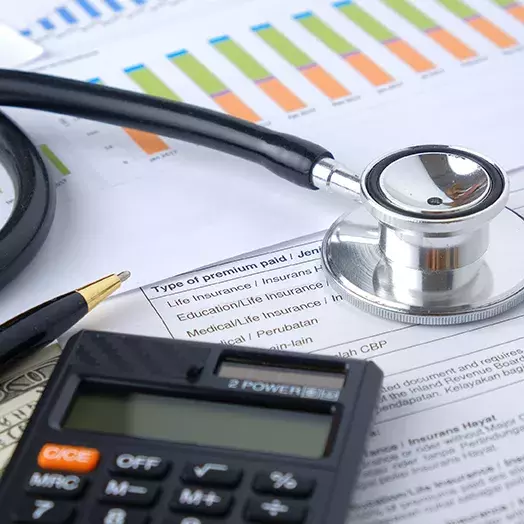
Study Suggests Misalignment Between Tax Subsidies for Nonprofit Hospitals and the Community Benefit These Hospitals Provide
There is a surprising misalignment between the tax subsidies received by nonprofit hospitals in the United States and the community benefit that these hospitals provide, according to a new study in JAMA Network Open by Ge Bai, PhD, CPA, a professor of practice at the Johns Hopkins Carey Business School, and her team.
Throughout the U.S., nonprofit hospitals receive sizeable subsidies estimated at least $25 billion, including exemption from federal and state taxes, and the ability to issue tax-free bonds. Although federal law does not impose a minimum requirement, nonprofit hospitals are required to provide various forms of community benefit, of which the largest is unreimbursed Medicaid costs. Unreimbursed Medicaid costs are those costs incurred by hospitals for treating Medicaid patients that exceed the payments hospitals receive from the government.
According to the study, nonprofit and for-profit hospitals in 2019 had similar national weighted average unreimbursed Medicaid costs as a share of total expenses (2.51% and 2.53%, respectively). In half of the 45 states in which both nonprofit and for-profit hospitals operate, the subsidized nonprofit hospitals had a lower ratio of such unreimbursed Medicaid costs to expenses than for-profit hospitals. Thus, the largest component of community benefit supposedly provided by nonprofit hospitals (i.e., unreimbursed Medicaid costs) is poorly aligned with the automatic tax subsidies that these institutions receive.
“Taxpayers subsidize nonprofit hospitals in exchange for their charitable actions that benefit the community. Nonprofit hospitals fall short of taxpayers’ expectations when they do no more to help Medicaid patients than for-profit hospitals, which pay taxes.”
Ge Bai
What to Read Next

research
New Prediction Model Shows Increased Financial Distress of For-Profit HospitalsBai and her colleagues suggest that policy makers should do more to address these issues, including greater transparency about the magnitude of the subsidies received by nonprofit hospitals and establishing a more direct nexus between these subsidies and the performance of nonprofit hospitals in providing community benefit.
“Taxpayers subsidize nonprofit hospitals in exchange for their charitable actions that benefit the community. Nonprofit hospitals fall short of taxpayers’ expectations when they do no more to help Medicaid patients than for-profit hospitals, which pay taxes,” said Bai, the study’s lead author. Bai’s research focuses on pricing, policy, and management within the health care industry.
The study was based on data from the Centers for Medicare & Medicaid Services 2019 Hospital Cost reports, which contains information on self-reported unreimbursed Medicaid costs for a sample of 3,446 private U.S. hospitals (2,617 nonprofit and 829 for-profit hospitals). Unreimbursed Medicaid costs were calculated as the estimated cost for treating Medicaid patients, which included the charges for services multiplied by the hospital’s cost-to-charge ratio, and the net of all reimbursements and supplemental payments.
The research was supported by the Episcopal Health Foundation, the Commonwealth Fund, and Arnold Ventures.


